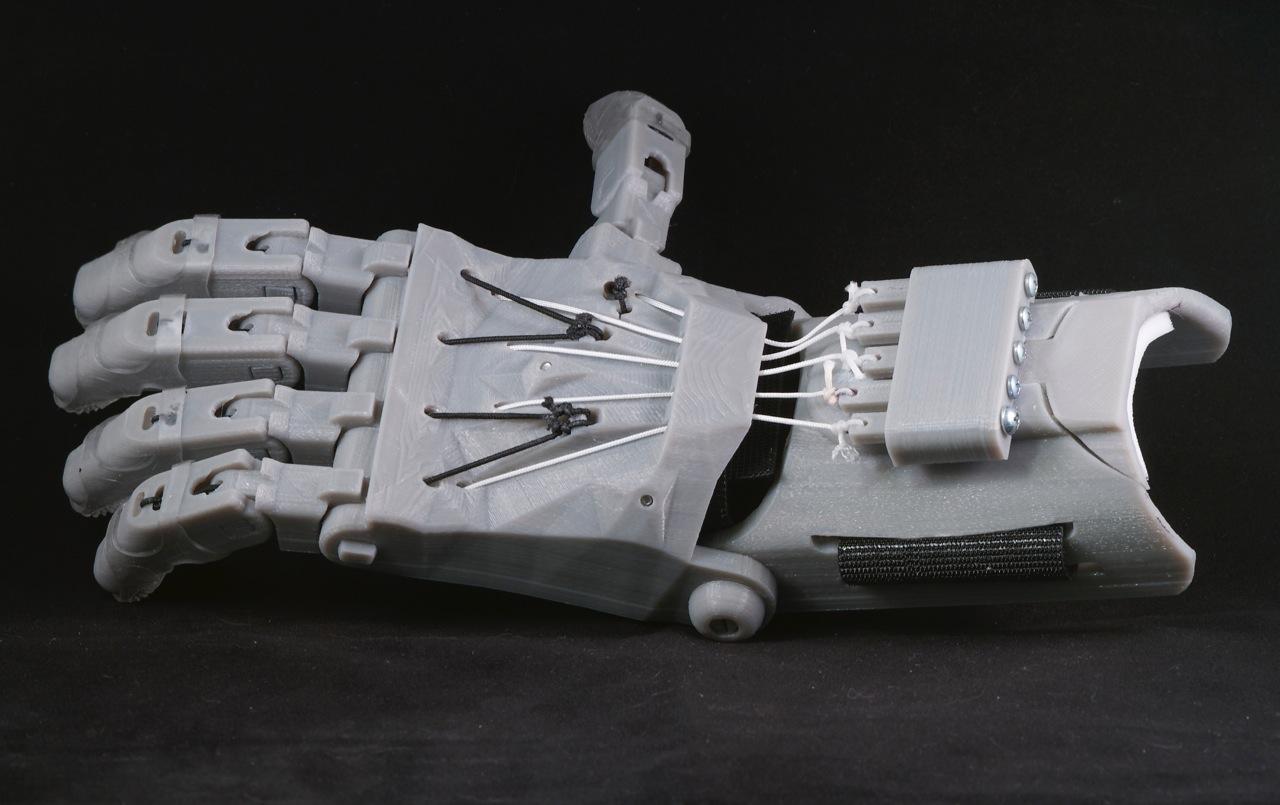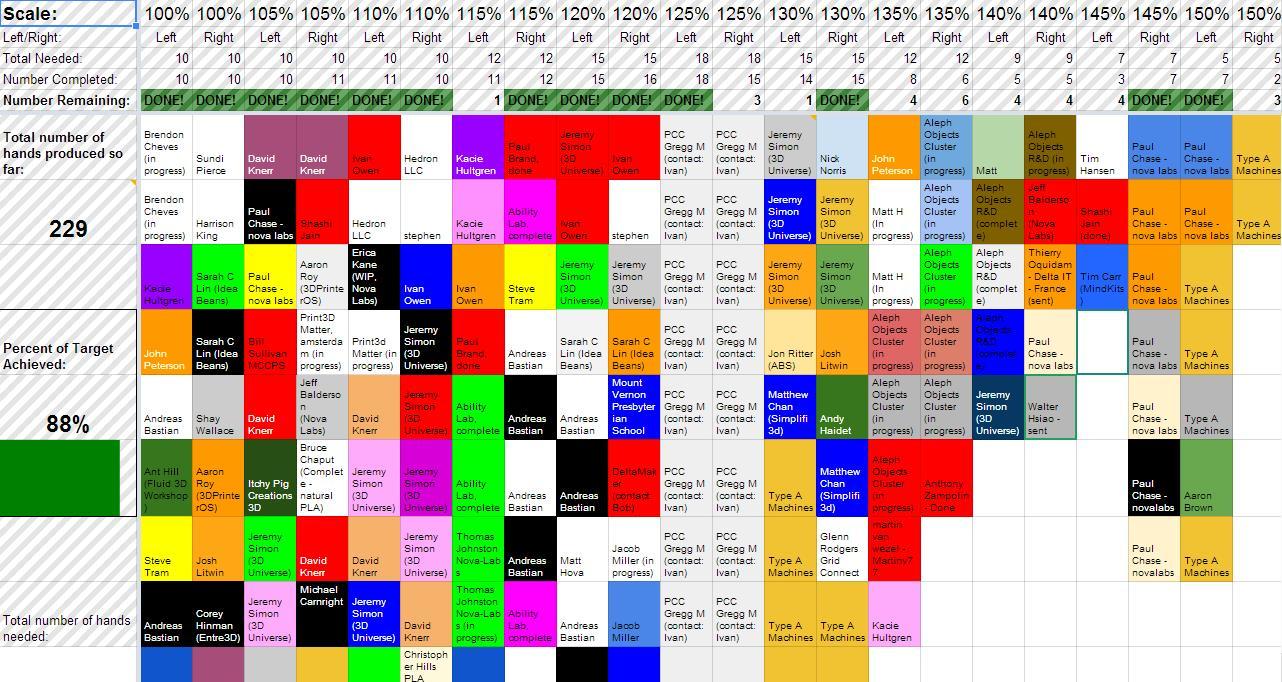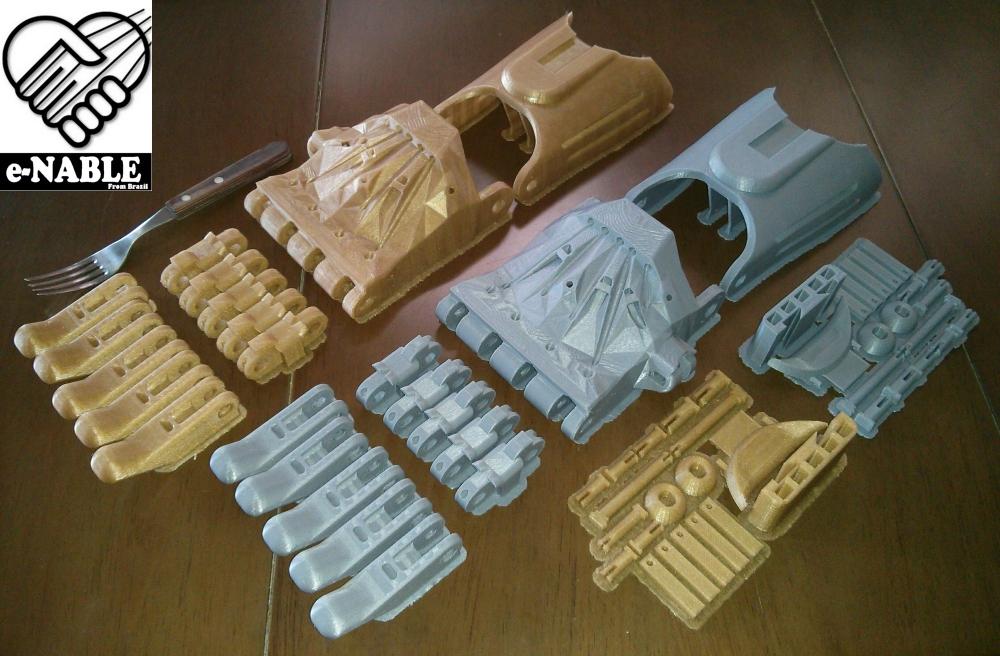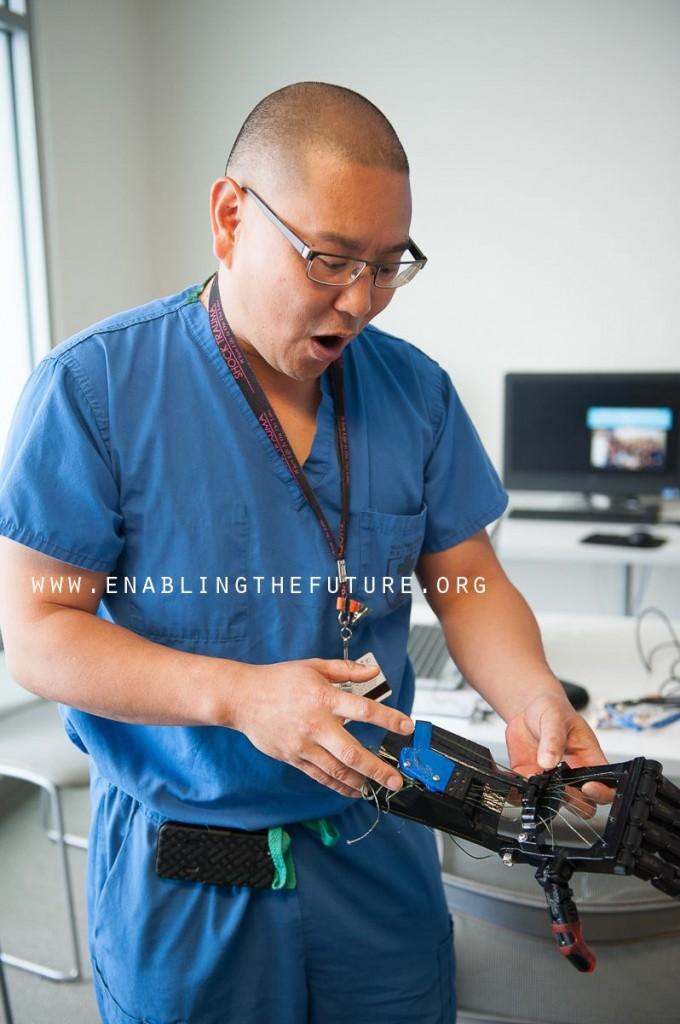Every time I write a story about the volunteer group e-NABLE, I get goosebumps running down my spine, and tears begin forming in my eyes. It’s stories like these that make writing about 3D printing such a pleasure. The technology has many benefits, and it has been used for many great causes, but it’s very difficult to compete with what e-NABLE has been doing.
For those of you who don’t know by now, e-NABLE is a group of caring individuals who spend their free time working on creating the best, most affordable, and most easily accessible 3D printed prosthetic hands and arms for children, and some adults in need. The group has been in the news quite a bit as of late, as finally mainstream media has caught on to their amazing charity work. Traditional prosthetic hands cost upwards of $50,000, and many insurance companies refuse to pick up the bill for children, who end up outgrowing them within only a couple years. It’s just not practical from a financial standpoint to spend $50,000 for a hand that a child may get very minimal use out of.
This is where e-NABLE comes into play. Using open source 3D printable design files, anyone with a 3D printer can print out a custom sized prosthetic hand in a matter of hours. The price tag? Between $15-$50. That’s right, less than 1/10,000 of the price of traditional prosthesis.
This Sunday, thanks to the 2,000+ members of e-NABLE, there will be a landmark event taking place at John Hopkins Hospital in Baltimore, Maryland, where volunteers, children with upper limb disabilities, parents, policy-makers, medical professionals, veterans of war, and others will be on hand taking part in conferences, workshops, and training.
For the event, a newly designed prosthetic hand will also be released, one which the organization hopes will help make 3D printed prosthetics goes more mainstream. It is called the “Raptor Hand”, and volunteers have 3D printed 229 of these hands, which will be assembled as part of workshops during the event, to allow parents and children to learn about 3D printing and assembling these new hands. They will then be donated to 229 different people in need of prosthesis.
Jeremy Simon of 3DUniverse and e-NABLE
“The parts being printed are for a brand new e-NABLE design called The Raptor, which was developed as a first-ever collaborative effort by a group of e-NABLE’s top designers, responsible for the most popular models released previously,” said one of e-NABLE’s lead members, Jeremy Simon to 3DPrint.com. “I had the honor of providing project management throughout the design process, and over the course of just four weeks, we designed and tested the Raptor. The lead designers were Peter Binkley, Ivan Owen, Frankie Flood, and Andreas Bastian.”
Also on Sunday, the design files for the Raptor Hand will be made available for free download by the public, so that anyone with access to a 3D printer will have the ability to create their own prosthetic hands. The objectives in designing this new hand are as follow, according to Simon:
- To simplify fabrication, assembly and repair for makers and recipients alike.
- To provide a platform and reference design for future innovations, incremental and radical.
- To identify a core features set and standardized dimensions embodied in accessible 3D models with progressive licensing terms that will ensure widespread availability and future development.
e-NABLE has previously used other open source 3D prosthetic hand designs as their “go to” designs. These included the Cyborg Beast, the Talon Hand, the Ody Hand and the Talon Beast. The Raptor Hand will improve upon the designs of these by adding the following features:
- Easier and quicker printing (no supports required)
- Easier and quicker assembly (no Chicago Screws required, simplified cord installation)
- An improved tensioning system (modular design, allowing for easier future development)
- Improved documentation
“We are currently releasing a mesh-based version of the design, editable in the free Blender modeling software,” said Simon. “In the near future, we will also be releasing a parametric version, editable in Autodesk Fusion, which is also available to e-NABLE members and others for free. This version of the design will allow for easy customization across several dimensions of the models. The two models will have different aesthetics, but share the same mechanical and functional features, and (thanks to the standardized measurements) printed parts from the two models will be mutually compatible. We think this will make it easier for developers to create and test new components and solutions, which, if successful, will be more easily integrated into future e-NABLE hands.”
One notable participant at the conference will be Dr. Albert Chi, who is a trauma surgeon at Johns Hopkins Hospital, a Lieutenant Commander in the US Naval Reserve, and a world-renowned researcher on state-of-the-art prosthesis. He has been a major proponent in getting some of the medical community interested in the 3D printing of prosthesis. He is also working with e-NABLE to further develop this incredible technology.
“e-NABLE’s collaborative approach to design and democratization of 3D-printed prostheses could significantly improve millions of lives worldwide. Now is the time to bring these technologies and practices into mainstream medicine,” said Chi to one of e-NABLE’s writers.
There are literally thousands upon thousands of children with severe upper limb disabilities from all over the world, including here in the United States as well as in war torn nations like Sudan. The ability to create extremely affordable prosthetic hands means there is tremendous potential for all of these children and even adults to benefit from this phenomenal movement. On Sunday, 229 more individuals will have newly 3D printed prosthetic hands to call their own, and hundreds more will set out to begin creating their own.
If you are interested in attending this event, it is free to parents and children with upper limb disabilities as well as veterans. Students, medical residents, and educators can purchase tickets for $15.00 including a meal, while tickets for medical professionals and the general public are $50.00, including a meal. Tickets may be purchased here.
Are you planning to attend this event? Have you 3D printed a Raptor Hand to donate? We’d love to see your design. Discuss in the 3D Printed Raptor Hand forum thread on 3DPB.com.
Subscribe to Our Email Newsletter
Stay up-to-date on all the latest news from the 3D printing industry and receive information and offers from third party vendors.
You May Also Like
Precision at the Microscale: UK Researchers Advance Medical Devices with BMF’s 3D Printing Tech
University of Nottingham researchers are using Boston Micro Fabrication‘s (BMF) 3D printing technology to develop medical devices that improve compatibility with human tissue. Funded by a UK grant, this project...
3D Printing Webinar and Event Roundup: April 21, 2024
It’s another busy week of webinars and events, starting with Hannover Messe in Germany and continuing with Metalcasting Congress, Chinaplas, TechBlick’s Innovation Festival, and more. Stratasys continues its advanced training...
3D Printing Webinar and Event Roundup: March 17, 2024
It’s another busy week of webinars and events, including SALMED 2024 and AM Forum in Berlin. Stratasys continues its in-person training and is offering two webinars, ASTM is holding a...
3D Printed Micro Antenna is 15% Smaller and 6X Lighter
Horizon Microtechnologies has achieved success in creating a high-frequency D-Band horn antenna through micro 3D printing. However, this achievement did not rely solely on 3D printing; it involved a combination...


































